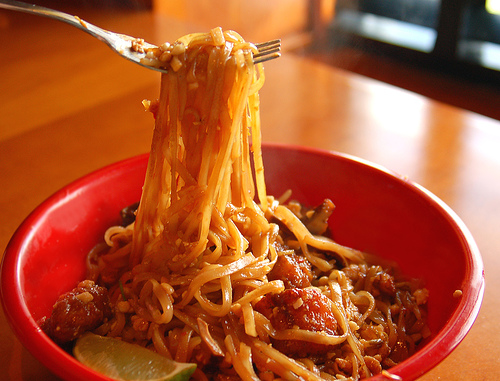Pad Thai: A nation-building ambassador food to the world

I had never really stopped to think about Pad Thai before reading this article about its historical underpinnings. I vaguely knew that it was a street food in Thailand, cooked up in a million different variations at a million different market stalls. And I knew that the Americanized version is a far cry from "authentic" Pad Thai. But I certainly had no idea that the dish was invented whole cloth in the 1930s by Thailand's new leader who created it as a "volksnoodle," a dish to symbolize Thailand and perpetuate the nation's new identity throughout the world.
When Field Marshal Plaek Pibulsongkram helped overthrow Thailand's monarchy in 1932, he decided that what the country needed was a signature noodle dish. This dish would not only improve the country's economy, it would also help feed the people, and present the world with a delicious national food. The recipe itself was most likely created by the family chef, and it was quickly disseminated across the country.
Pad Thai is one of my favorite foods, and I must say it does well as a national dish. Its noodle base makes it both hearty and affordable. Its infinite variations give each chef's rendition a unique flavor. It has the ability to sub in any meat or tofu that the customer wants, which makes it versatile for every sort of diet. And its exquisite balance of flavors (sweet, salty, sour and spicy) and textures (tender noodles, bits of egg, cooked meats, fresh bean sprouts, and crunchy peanuts) makes it an admirable symbol for a happy nation.
Pad Thai is all about balance. It shouldn't be too sweet, or too spicy. The peanuts should be a texture, not an overwhelming flavor. I always like to squeeze a bit of lime over mine, although not all restaurants provide the lime. (It may not be authentic. I sure love it, though.) Pad Thai is easy enough to make, if you have all the ingredients, which I never do. This is one dish that I am happy to only order at restaurants.
Image courtesy Flickr/pockafwye

3 comments